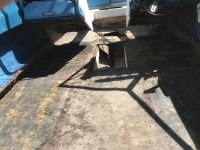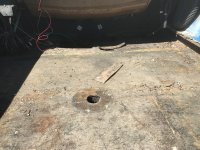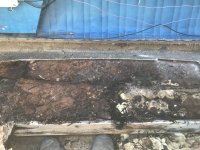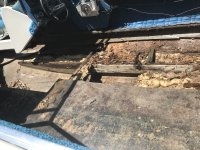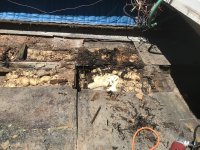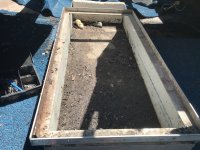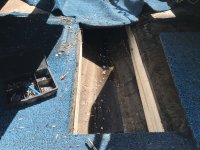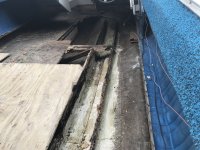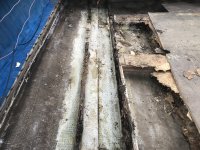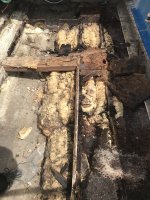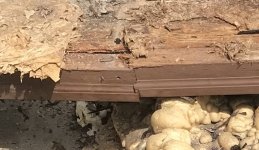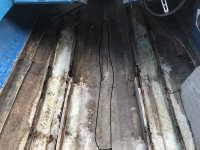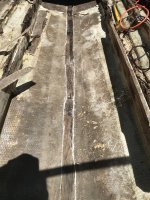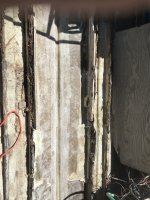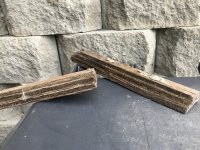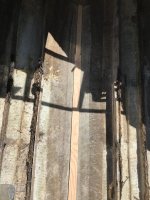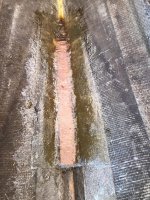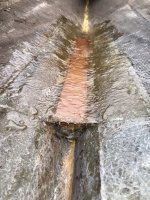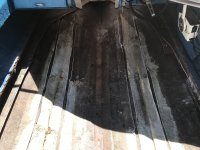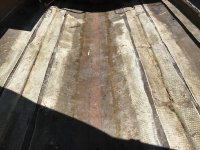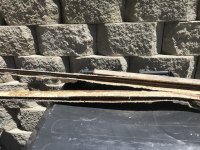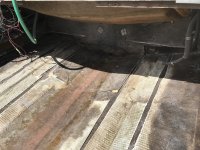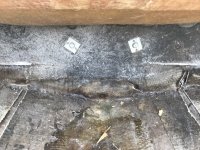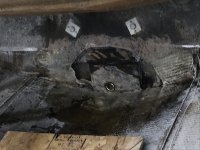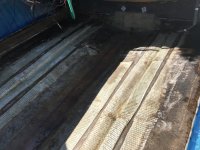More progress has been made and here is my current update. If I am doing something wrong, tell me why, it would be greatly appreciated.
To remove the rotten ass stringers, I used a reciprocating saw and tried to fillet them out so I would have the least amount of glass left and a good template. However the wood crumbled like a crouton as soon as it was separated, so I just trashed them. I had previously taken measurements every 6” where there was a noticeable slope, and then only every 12” after. When I cut stringers out and looked at them I could swear drunk sailor had cut them, I could not discern a relating angle or slope, however they were very rotten.
Concerning hard spots, I did take account that there were only two points of contact to the keel, one in the bow and one in the stern on each stringer. Absolutely no other wood below the deck had contact with the keel (with the exception of the strake, as it was mounted latterly), everything was floating with tabbed glass, and it blew my mind and had me thinking as to why.
Unfortunately I was a bit wishy/washy with what I wanted to do concerning the heavy weave stringer glass. I started out wanting to cut it all out but noticed how great of a bond it still had, so I stopped and thought I would just grind the leftover lips down. Being frustrated with how much fiber dust was being generated I went back to the complete removal option, but it just didn’t pan out in my mind. Some spots I thought were delaminated, took me 10-15 minutes screwing around with chisels, cutting and grinding, when I should have just let it be. To me with it is added strength, it would makes no sense to remove unless delaminated or otherwise undesirable.
There was some ugliness I didn’t want to see, but I wanted to know anyway. The glass on the stern below the bilge was cracked, so I cut out a fairly large section to get a better idea of what was going on. The section around the drain hole was composed of what I think was dimensional wood and was hard as a rock but wet. The transom wood above was comprised of marine plywood had begun to rot. In concerns to the transom motor mount, when pressing on the motor, the whole boat and trailer moves more than any flex on the transom, so it’s still in good shape (as far as I am ignorant), but the rot process has set in. The first inch of transom wood, I could pull out with my fingers, the rest I had to chisel and cut out with an oscillating tool. I chose to use PB to pack the back, pressing in the replacement wood and covered and leveled with PB. I then used one layer of CSM and used 6x8” sections of 1708 biaxial glass. I do understand I am only slowing things down, and delaying the inevitability that the transom will need work.
As I had only used mat and cloth glass separately in auto body, I have to say I am a hell of a fan of the biaxial cloth/mat, it’s very nice and have greatly enjoyed using it.




















